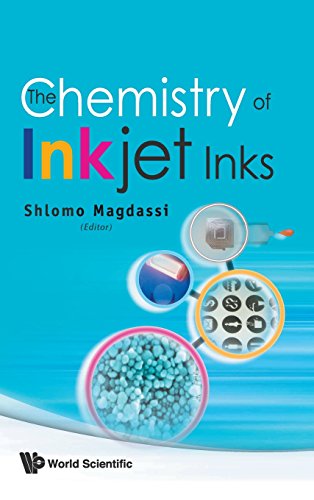

The Chemistry of Inkjet Inks Magdassi S.
Publisher: WS
(Nanowerk News) SunJet, the inkjet ink division of Sun Chemical, has announced at drupa the development of ink chemistry designed to support and deliver conductive films using nano-particles of silver. Graphene is closely related to graphite Ink-jet printing is an established and inexpensive industrial process that can apply a range of liquified materials on a variety of substrates over a wide area, and adapted for electronics in making transistor circuits and solar cells. MIDSOMER NORTON, UK − March 7, 2012 – SunJet, the inkjet ink division of Sun Chemical, will launch its JetStream® PCO Oil-based HD black ink for Seiko Instruments Inc. With so many forms of digital inkjet printing, why are so many products still being screen printed and why are so many new products choosing screen print? An example of a sol is black inkjet ink (carbon black dispersed in water). Yes, I realize that it's a genetic issue with our six-legged buddies, but with screen printing, especially industrial screen printing, the chemistry of the inks and substrates we use are the genetics of the breed. Almost all aerogels are derived from gels made through sol-gel chemistry. The chemical company Merck in Darmstadt, Germany will license ink-jet ink technology from electronics manufacturer Seiko Epson in Tokyo for the manufacture of organic light-emitting diode (OLED) television displays. The Chemistry of Inkjet Inks Shlomo Magdassi, English | 2009-07-31 | ISBN: 9812818219 | 356 pages | PDF | 6,6 mbModern printing is based on digitizing information and then representing it o. Whilst inkjet technology is well-established on home and small office desktops and is now having increasing impact in commercial printing, it can also be used to deposit materials other than ink as individual droplets at a microscopic scale. An inkjet printer using graphene-based ink developed by researchers could herald a breakthrough in flexible electronics. This precision requires multi-disciplinary skills – a combination of careful design, implementation and operation across physics, fluid mechanics, chemistry and engineering. Here we'll explain what the term “sol-gel” liquid solution, for example, salt dissolved in water. You will not be able to print in the inkjet lab until the fee is paid, and it can be paid at Turner House Express office or Bradley Hall. What the chemistry fee covers: The $80.00 fee covers all inkjet ink use and all wet processes. The team led by engineering professor Mark Hersam published its findings online in a recent issue of the Journal of Physical Chemistry Letters (paid subscription required). Due to the complete chemical and color compatibility of the two ink sets, OEM cartridges can be replaced with Nazdar 910 Series cartridges as they run out, rather than all colors at the initial install. "Graphene has a unique combination of properties that is ideal for next-generation electronics, including high electrical conductivity, mechanical flexibility, and chemical stability," says Mark Hersam, professor of materials science and engineering at Northwestern's McCormick School of Engineering and Applied Science.